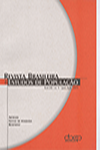Voronoi poligons as an alternative for problems in minimum comparable areas: an analysis of demographic changes in Northern Brazil
Keywords:
Voronoi polygons, Minimum comparable areas, Spatial analysisAbstract
This article presents an alternative methodology for constructing minimum comparable areas (MCAs) and a method for weighting socioeconomic variables for such MCAs. Empirical analysis – especially in the area of economics – of demographic, economic and social changes at the municipal level is a reasonably complex task. This is so because of the constant creation of new districts produced by the division of present municipalities. The method of aggregation normally used follows the same logic of territorial division, which generates biases in statistical tests. In this article the authors propose an alternative method for constructing MCAs by applying Voronoi polygons and aggregating the data by weighting. To test the method proposed, demographic changes that took place in the Northern Region of Brazil between 1980 and 2000 were evaluated in the light of New Economic Geography (NEG), comparing it with the MCA method adopted by IPEA. The MCA model with Voronoi polygons showed the best adjustment of the data and consistency regarding the behavior of the variables according to the theory. With this performance, further research aimed at carrying out spatial analyses with the use of Voronoi polygons will most likely present more satisfactory results since, by means of this methodology, the data is grouped according to the logic of neighboring spatial effects.Downloads
Downloads
Published
How to Cite
Issue
Section
License
Papers published in Rebep are original and protected under the Creative Commons attribution-type license (CC-BY). This license allows you to reuse publications in whole or in part for any purpose, free of charge, even for commercial purposes. Any person or institution can copy, distribute or reuse the content, as long as the author and the original source are properly mentioned.

